 |
STEM in Early Childhood (CDA 2, 3, and 8) |
3.00 |
STEM is an intentional, integrative approach to teaching and learning that can occur across all knowledge areas; it is not a specific curriculum. The STEM approach focuses on providing opportunities for students to explore and develop a comprehensive set of concepts, competencies, and thinking skills. STEM competencies include a vocabulary rich in the language of science, technology, engineering and math—words like hypothesis, gravity, buoyant, balance, temperature, and battery. STEM competencies also include basic principles of engineering, like problem-solving and planning; of science, like experimentation and observation; of technology, like using tools to complete both a task and solve real world problems; and of math by recognizing that basic principles of math are part of everyday activities, like comparing and contrasting, counting, and dividing a whole to create equal parts.
This course is also designed to be part of a Child Development Associate (CDA) Credential™ curriculum. It covers Subject Area 2: Advancing Children’s Physical and Intellectual Development, Subject Area 3: Supporting Children’s Social and Emotional Development and Subject Area 8: Understanding Principles of Child Development and Learning. |
 |
Infectious Diseases in Early Childhood (CDA 1) |
3.00 |
An infectious disease is an illness that is caused by organisms such as bacteria, viruses, fungi, and parasites. Many of these organisms live in or on our bodies, and are normally harmless. But under certain circumstances, they can cause disease. This course is also designed to be part of a Child Development Associate (CDA) Credential™ curriculum. It covers Subject Area 1: Planning a Safe, Healthy Environment to Invite Learning. |
 |
Safe Infant Sleep in Early Childhood (CDA 1 and 4) |
2.00 |
This course is focused on the American Academy of Pediatrics’ best practice recommendations for reducing the risk of Sudden Infant Death Syndrome (SIDS) and Sudden Unexpected Infant Death (SUID) and for promoting safe sleep in infant care settings as well as safe infant sleep policies, and how to communicate best practice for safe sleep with the families of infants in your care. This course is also designed to be part of a Child Development Associate (CDA) Credential™ curriculum. It covers Subject Area 1: Planning a Safe, Healthy Environment to Invite Learning and Subject Area 4: Building Productive Relationships with Families. |
 |
Habilidades del siglo XXI en la primera infancia (CDA 2, 3 y 8) (Spanish) 21st Century Skills in Early Childhood (CDA 2, 3, and 8) |
2.00 |
En este curso, identificará las habilidades que se consideran esenciales para el éxito en el siglo XXI y examinará la conexión fundamental entre estas habilidades y el aprendizaje académico. También explorará áreas clave de aprendizaje de los estándares de aprendizaje para la primera infancia (desarrollo social y emocional y enfoques para el aprendizaje a través del juego) que pueden ayudarlo a promover el desarrollo de habilidades del siglo XXI en los niños con quienes trabaja. |
 |
Managing Performance: Legal Appraisals (Instructor Guide) |
0.84 |
In this course you will learn to: identify legal appraisals and responsibilities in relation to laws enforced by the EEOC, and identify risks of legal challenges and the importance of maintaining positive communication. |
 |
Paraprofessional Reading Skills |
1.00 |
This course covers Paraprofessional Reading Skills. It is just one out of two Paraprofessional Reading courses, and one out of eight ParaPro prep courses that will prepare you on K-12 topics. This course will help you understand, interpret, and analyze a wide range of text. After taking these prep courses, you should be prepared for the ETS ParaPro Assessment. This course can be taken as a stand-alone learning event, as part of a broader paraprofessional curriculum, or in preparation for the ParaPro Assessment. |
 |
Introduction to Incident Command and Control |
1.50 |
This course is based on the National Incident Management System (NIMS). This course uses lessons to describes a phased process for the implementation of NIMS management characteristics into an Incident Command System. This phased process is a common-sense approach to emergency scene incident command based on the typical timeline for fireground development. It is important that you review local municipal law and organizational policies for implementing Incident Command. This course presents a system for implementing incident command during emergency operations. Incident Command does not have to be implemented using this system however, it needs to be implemented using a system. |
 |
Evaluación e implementación de un entorno de cuidado infantil seguro (CDA 1 & 5) (Spanish) Assessing and Implementing a Safe Child Care Environment (CDA 1 & 5) |
2.00 |
Cuando las familias inscriben a su hijo en un programa de cuidado infantil, confían en que los profesionales que trabajan con su hijo lo mantendrán seguro. A medida que los bebés y niños pequeños curiosos se desarrollan, su deseo de explorar presenta desafíos de seguridad únicos. Este curso guía a los profesionales que trabajan con bebés y niños pequeños para evaluar los espacios de juego, las experiencias de los niños y las prácticas actuales para maximizar la seguridad de los niños.
When families enroll their child in a child care program, they trust that the professionals working with their child will keep him safe. As curious infants and toddlers develop, their desire to explore presents unique safety challenges. This course guides professionals who work with infants and toddlers to assess play spaces, children’s experiences, and current practices to maximize children’s safety. |
 |
Los beneficios de conectar a personas mayores y niños pequeños (CDA 3) (Spanish) Benefits of Connecting Seniors and Young Children (CDA 3) |
1.00 |
Este curso se enfoca en involucrar a adultos mayores en programas de educación y cuidado infantil. Descubra los beneficios para los niños, los adultos mayores, su programa y para usted cuando participan personas mayores.
This course focuses on involving senior adults in child care and education programs. Discover the benefits to the children, senior adults, your program, and you when seniors are involved. |
 |
Desarrollo cerebral en bebés y niños pequeños (CDA 8) (Spanish) Brain Development in Infants and Toddlers (CDA 8) |
2.00 |
El desarrollo del cerebro ha cambiado en los últimos 20 años. El desarrollo temprano del cerebro se centró principalmente en los aspectos intelectuales del cerebro, pero en los últimos 10 años, se ha prestado más atención a los intercambios socioemocionales en la infancia y cómo eso afecta el desarrollo del cerebro. Las experiencias tempranas predisponen la forma en que los niños ven el mundo.
Brain development has changed over the last 20 years. Early brain development focused mainly on the intellectual aspects of the brain, but over the last 10 years, more focus has been placed on the social-emotional exchanges in infancy and how that affects brain development. Early experiences predispose how children see the world. |
 |
El temperamento de los niños: un enfoque práctico para satisfacer las necesidades individuales (CDA 3) (Spanish) Children's Temperament: A Practical Approach to Meeting Individual Needs (CDA 3) |
2.00 |
Cada niño viene a este mundo como un individuo único con formas únicas de responder al mundo a través de sus emociones y acciones. A esto se le llama temperamento. Reconocer y comprender las diferencias de temperamento es crucial para fomentar la salud socioemocional de un niño.
Every child comes into this world as a unique individual with unique ways of responding to the world through their emotions and actions. This is called temperament. Recognizing and understanding differences in temperament is crucial for nurturing a child's social-emotional health. |
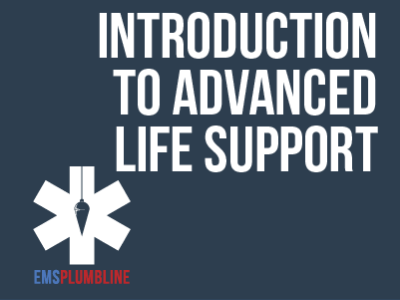 |
Constructing: Airway Essentials—Part 7 |
0.50 |
Every paramedic has ideas on what is needed to obtain a good view while instrumenting the airway. If this lesson does not create an educated discussion on the topic, nothing will. Take the opportunity to imagine yourself in the classroom and identify what you would do.Final Exam: This multiple choice exam is designed to test your knowledge of the material you just reviewed. You have two attempts to gain an 80% or higher on this exam. Please take your time and answer each question carefully. |
 |
Managerial Leadership: Coping Through a Change Process (Instructor Guide) |
1.00 |
Whether your employees perceive change as positive or negative, you might encounter an emotional response from them. They will have many questions regarding their roles, competencies, and, possibly, even their futures. Your employees might feel they are being forced out of a comfort zone, and they might experience a loss of familiarity. Typical responses during a change include feelings of doubt, anxiety, fear, and anger. Sometimes, changes in the workplace can trigger a severe emotional response.
In this course you will learn to: respond to distress and reduce stress, and succeed through failure and deal with mistakes.
This Instructor's Edition of this course includes notes and suggestions to assist you in presenting the material, whether in an in-person classroom setting or as an instructor-led online or distance-learning course. It also provides you with the answers to questions found in mid-lesson activities, as well as in the quiz that concludes the course. |
 |
Paraprofessional Math Skills 2: Geometry and Measurement |
2.50 |
This course covers Paraprofessional Math Skills: Geometry and Measurement. It is just one out of three Paraprofessional Math Skills courses, and one out of eight ParaPro prep courses that will prepare you on K-12 topics. This course will help you develop your knowledge of these mathematical concepts and help you apply them to abstract and real-life situations. After taking these prep courses, you should be prepared for the ETS ParaPro Assessment. This course can be taken as a stand-alone learning event, as part of a broader paraprofessional curriculum, or in preparation for the ParaPro Assessment.
After completing this course, you will be able to:
Understand and represent time and money in more than one way.
Convert between units or measures in the same system.
Identify basic geometrical shapes.
Perform computations related to area, volume, and perimeter for basic shapes.
Graph data on an xy-coordinate plane. |
 |
Introduction to Risk Management |
1.00 |
This an introductory course that introduces the firefighter to the concepts of risk management. The concepts introduced in this course are intended to create a healthy attitude regarding safety and begins a process of developing a safety-minded culture. The definitions of hazard and risk are defined and the concept of risk management is explained. This explanation of risk management is intended for firefighters who need a rapid and effective method for identifying and mitigating dangers on the fire ground. |
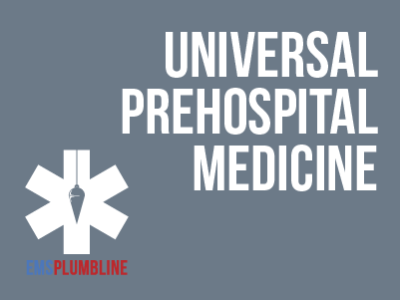 |
Pneumothorax and Hemothorax for EMTs |
1.00 |
Paramedic Instructor Peter Bonadonna discusses some of the most life threatening chest injures. |
 |
Spinal Motion Restriction Decisions |
1.50 |
Two of the University of Rochester’s finest educators discuss the decision-making that is involved with Spinal Motion Restriction.This enlightening discussion offers information that will allow providers to better interpret standing protocols.Subsequently providers will be able to create and execute better treatment plans.
Jeremy Cushman M.D., M.S., NYS Paramedic is the Chief of the Division of Prehospital Medicine, Department of Emergency Medicine, at the University of Rochester.
Mark Gestring, M.D., F.A.C.S., is the Director of Adult Trauma at the University of Rochester’s Regional Trauma Center.
Enjoy the conversation as these two experts in their respective fields escort you through the nuance that every provider should consider when treating a patient with possible spinal trauma. |
 |
VAD Educational Updates for the Prehospital Care Provider |
1.00 |
Ventricular Assist Devices (VADs) are not new devices. In fact, the first successful use of such a device was described in 1966. Since then, and particularly in the past few years, VAD design and safety has improved significantly and are now commonly implanted devices.
This course strives to bring prehospital providers current with the most commonly implanted devices at the time - this course will not cover every device that a prehospital provider may encounter.
Following successful completion of the material, the provider should feel comfortable recognizing the VAD patient when encountered in the community, have an understanding of the basic VAD components, be able to assess the VAD patient's hemodynamic status, and be able to deliver care in the prehospital setting. |
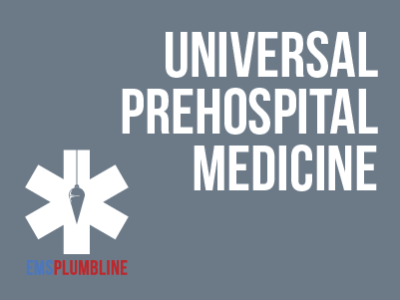 |
Mental Health - Anxiety Overview |
1.00 |
This brief overview of the topic of anxiety disorders explores the assessment and treatment that EMS providers should be familiar with. Along with the intricate evaluations that EMS providers must obtain on the patients they are caring for there is the underlying issue of evaluating ourselves. This tour of the topic will certainly offer opportunities for EMS providers to assist responders and patients alike.
Exam Description Please read each question carefully. You will have two attempts to gain a 70% or higher on this exam. If you are not successful in two attempts you are welcome to take the course again to gain the certification. Best of luck! |
 |
Climate vs. the Respiratory System |
1.00 |
This lesson briefly explores chronic respiratory illness. The benefit is we bring Meteorologist Bob Metcalfe to our discussion. You will quickly see that there are a number of things going on everyday that effect your respiratory patients that we should be aware of. Final Exam:Please read the questions carefully. You will have two attempts to obtain a 70% or higher. If you are not successful on your second attempt you are welcome to take the course again. Good luck! |
 |
Managerial Leadership: Motivating Employees Through Change (Instructor Guide) |
0.50 |
Your organization’s vision was created to inspire and unite the members of the organization as they work toward achieving common goals. Change can distract employees from the vision because going through the change process can be intensely personal and emotional. Remembering the vision and its purpose can keep your employees focused on their role in the company.
In this course you will learn to: motivate employees through a change and prepare for difficulty, and overcome resistance and resolve conflict.
This Instructor's Edition of this course includes notes and suggestions to assist you in presenting the material, whether in an in-person classroom setting or as an instructor-led online or distance-learning course. It also provides you with the answers to questions found in mid-lesson activities, as well as in the quiz that concludes the course. |
 |
Paraprofessional Math Skills 1: Number Sense and Basic Algebra |
3.00 |
This course covers Paraprofessional Math Skills: Number Sense and Basic Algebra. It is just one out of three Paraprofessional Math Skills courses, and one out of eight ParaPro prep courses that will prepare you on K-12 topics. This course will help you develop your knowledge of these mathematical concepts and help you apply them to abstract and real-life situations. After taking these prep courses, you should be prepared for the ETS ParaPro Assessment. This course can be taken as a stand-alone learning event, as part of a broader paraprofessional curriculum, or in preparation for the ParaPro Assessment.
After completing this course, you will be able to:
Evaluate basic addition, subtraction, multiplication, and division expressions with whole numbers, fractions, and decimals
Recognize multiplication as repeated addition and division as repeated subtraction
Interpret mathematical symbols
Understand basic mathematical terms
Recognize the position of numbers in relation to each other
Understand equivalent forms of a number
Understand place value for whole numbers and decimal numbers
Compute percentages
Understand basic concepts of exponents
Use the order of operations to evaluate math expressions
Use mental math and solve problems by estimation
Solve word problems
Solve one-step, single-variable linear equations
Understand the sequence of numbers |
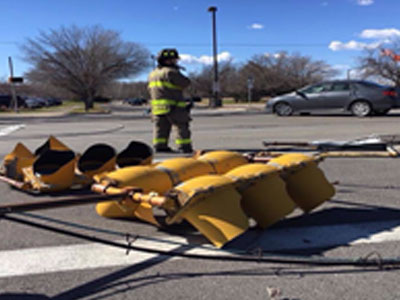 |
Utility Pole Incidents (NYS05) |
1.00 |
This is a basic lesson for the introduction or review of the utility pole for the firefighter. The lesson defines types of utility poles and identifies the risks and hazards associated with operating at incidents that involve them. The lesson is evaluated with a final multiple-choice quiz. A grade of 80% or better is required to pass this course. |
 |
Mental Health Depression |
1.50 |
Most, if not all, providers have an interest in helping those around them. We found six providers that chose to tell their stories as they relate to Chronic Depression. All of the stories are different but they are all being told for the same reason. These providers are willing to do what many of us will never do. They are sharing their experiences so that they will help those around them. Mental Health First-Aid Instructor, Melodie Kolmetz and Dual Certified Family Practice Physician / Family Therapist, Alan Lorenz discuss the growth that our profession has seen. They also give fantastic guidance regarding the care of patients, partners, and ourselves. |
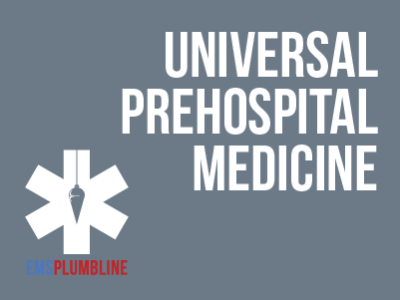 |
Neurogenic Shock Reviewed |
1.00 |
Terms that are commonly heard, such as neurogenic shock and spinal shock often confuse EMS providers. Knowing the meaning of each term is only the beginning. In this overview, Dr. Jeremy Cushman offers a few pearls of wisdom that will assist EMS providers of all levels with the secondary assessment of patients who may have suffered life-threatening spinal trauma. Test: This multiple choice exam is designed to test your knowledge of the material you just reviewed. You have one attempt to gain an 70% or higher on this exam. Please take your time and answer each question carefully.
|


























